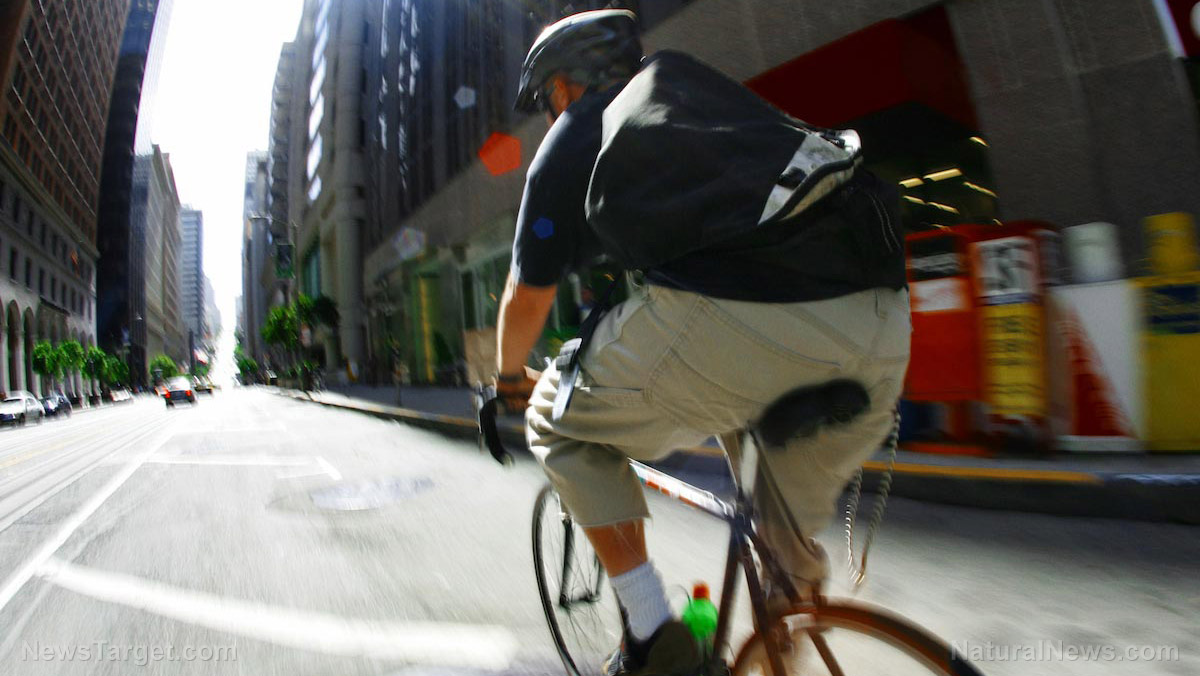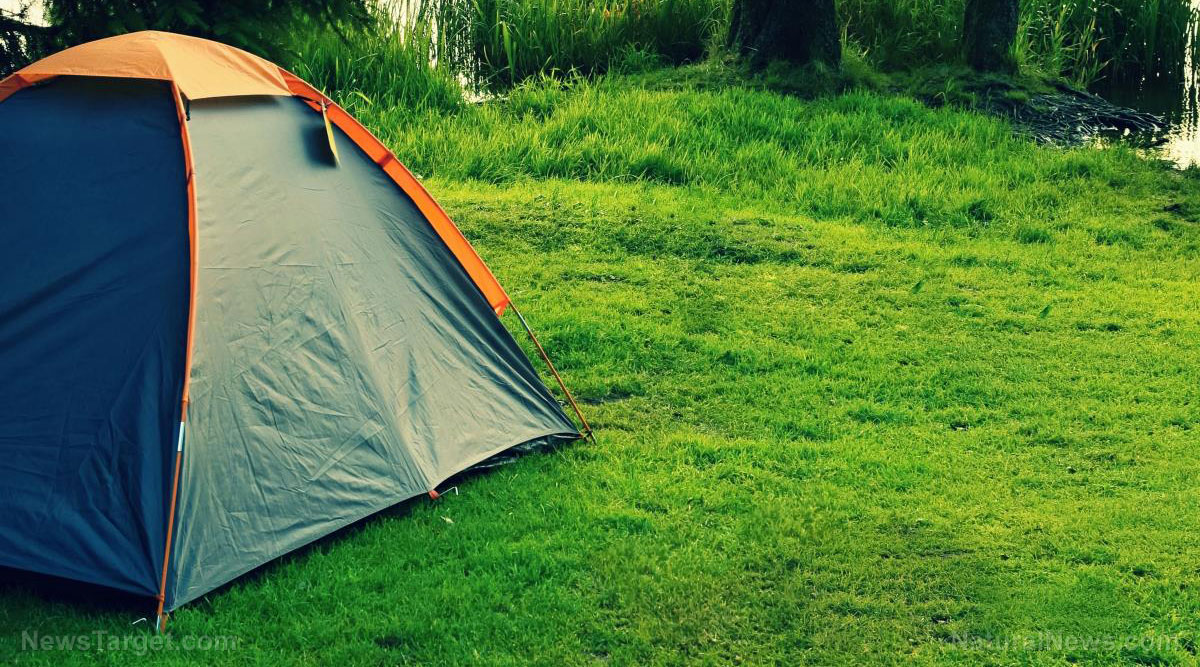 Parler
Parler Gab
Gab
Basic tips for urban preparedness
The tips below should help you figure out what to do before SHTF in the city: Rent the cheapest motel room you can find for a month This might seem excessive, but doing this will help you figure out if you can survive there with only your BOB. You can buy groceries, but only items and consumable health care products like deodorant, shampoo and soap. You're not allowed to purchase "extras" like can openers, cups, flashlights, pillowcases, razors, silverware or towels. Prep for proper hygiene and sanitation while at the hotel Hotel and motel rooms are full of germs and are often not properly cleaned. Surfaces like doorknobs, light switches, TV remotes and your pillows and bedspreads could be dirty. Before SHTF, make sure you bring the necessary supplies and gear to protect yourself from these situations. Bring a set of bedding and pillows To protect yourself against dirty hotel amenities, make sure your BOB has two pillowcases and two down-filled camping or travel pillows. You can also bring two bedsheets: one to dress over a bed military-style, the other as a top sheet. Include a metal hand-crank can opener in your BOB When packing your BOB, make sure you have an easy-to-use metal hand-crank can opener. A P-38 can opener is smaller, but it's much harder to use than a hand-crank can opener. Bring eating utensils that fit your needs Before SHTF, experiment with eating utensils. You can keep your BOB light by using several sets of plastic ware from fast food restaurants, or you can opt for a set of sturdier camping-style metal utensils. Practicing how to use these utensils will allow you to eat comfortably when SHTF, so find a set that works best for your needs. (Related: Urban prepping: 10 Ways to prep in the city.)What to include in your urban BOB
Here are some important items to include in your urban BOB: Basic supplies- Change of clothes
- Eye protection goggles
- Flashlight
- Food and water
- Mini first aid kit
- Multitool
- Protective gloves
- Protective headgear
- Reflective safety vest
- Respirator and masks
- Self-defense weapons
- Toiletry kit
- AA/AAA collapsible battery charger and rechargeable batteries
- A cooking spatula serving spoon for cooking
- Hunting/fishing supplies
- Over-the-door hooks for hanging things
- A pair of 3:2-prong plug converters so you can plug three-pronged laptops and other devices into a two-prong old-school wall outlet
- Small six-foot extension cord with three outlets since there are never enough outlets in hotel or motel rooms.
- Two rolls of quarters for vending machines, washers and dryers in hotels or motels
- Water treatment/purification gear
Make sure you and your BOB blend in wherever you go
Since you're preparing a BOB for urban survival, you need to make sure that your bag blends in while you're traveling using public transportation so police officers won't get suspicious. Avoid strapping all kinds of gear to the outside of your bag. Get a large enough bag that could fit all your gear inside. Camouflage, cover and concealment are also essential after SHTF, but you will sometimes need help. Make sure you can get the help you need by bringing a pair of high-visibility roadside safety vests with reflective material that will catch the attention of rescuers or medical teams.How to keep your urban bug-out bag TSA-friendly
As you pack your bag, you need to know what’s in it and if it stays up to date with current Transportation Security Administration (TSA) rules since they change pretty frequently. Some items, like guns and ammo, will need to be packed separately according to the rules. Other items like fuels will always be banned. There are other prohibited items that most of the traveling public is unaware of, like battery limitations and MREs, since the latter have heater elements/packs. Pre-made alcohol stoves and similar items are also prohibited. Don't bring anything clearly labeled as flammable like heat bottles because they will be confiscated. If you think you might have to travel in the city when SHTF, you should make sure that your bag is TSA-friendly. Keep your bag below 50 pounds to avoid extra airline fees for overweight baggage if you need to board a flight out of town. Keeping all your gear inside your bag will also prevent someone from being tempted to steal from you while you're traveling. Get a sturdy bag so it doesn't rip apart while on the airport conveyor belt.How to keep your BOB light
If you plan on bugging out with your whole family, have an effective plan to reduce the contents of your bug-out bag. One option is to have pre-positioned gear at your retreat location(s) or hidden caches so you can lighten the gear you have to carry. Have bug-out bags for all family member and enforce a multi-user bag philosophy. You should also have get-home and emergency gear in each car. Here are some ideas for pre-packed grab-and-go bags: A camping/tent bag This heavy bag, which is stored in your bug-out car, should have the following items:- Battery-powered fans
- Candles and matches
- An inflatable air bed and pump
- LED camping lanterns
- Two tents
- Other items for a large, multi-room, family-oriented tent or site
- Battery-operated and hand-crank coffee grinders and pots
- Cast iron pots and pans
- Collapsible water buckets
- Fire and cooking gear
- A folding table
- More LED lanterns
- Several multi-fuel stoves
- Solar chargers
- Solar lights
- 12v spotlights
- Collapsible fishing rods
- A couple of cans of tuna fish for bait
- Filet knives and skinning knives
- A Henry .22 survival rifle and extra ammo
- Land/trout lines and treble hooks
- LED headlamps
- One dozen leg-hold traps
- Shotgun and shells
- Small fresh- and saltwater tackle boxes
- Backup radios, parts and headsets
- Battery chargers
- Extra solar panels
- Small battery-operated TV and DVD player
- Battery-operated radio and CD player
- Your preferred communication device like handheld HAM radios
More related stories:
Urban survival tips that can help you stay alive when you need to bug out. Urban survival: 15 Items that you’ll need when SHTF. Urban prepping 101: How to grow medicinal herbs in an apartment. Sources include: TheSurvivalMom.com SurvivalWorld.com Brighteon.comGerman nuclear power plant stops operations following leak
By Belle Carter // Share
Clear and present danger: Putin warns NUCLEAR WAR is definitely coming if NATO continues to attack
By Mary Villareal // Share
5 Survival essentials for your bug-out vehicle
By Zoey Sky // Share
Another oil refinery, in Ohio, catches fire and has to be shut down
By Ethan Huff // Share
Food crisis continues: Upcoming US harvest expected to be the most disappointing in years
By Arsenio Toledo // Share
Governments continue to obscure COVID-19 vaccine data amid rising concerns over excess deaths
By patricklewis // Share
Tech giant Microsoft backs EXTINCTION with its support of carbon capture programs
By ramontomeydw // Share
Germany to resume arms exports to Israel despite repeated ceasefire violations
By isabelle // Share










